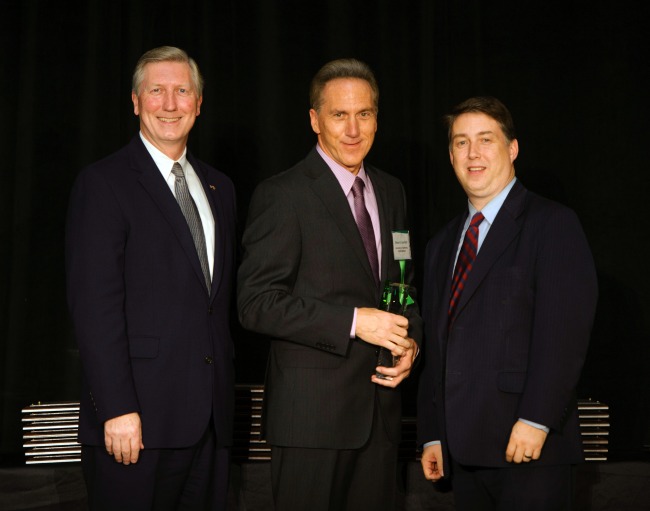Bruce H. Lipshutz Receives Green Chemistry Award
EPA Recognizes UCSB Organic Chemistry Professor in 2011 Presidential Green Chemistry Awards
The Presidential Green Chemistry Challenge Awards from the Environmental Protection Agency (EPA) were handed out at a ceremony in the Ronald Reagan Building in Washington, D.C. on June 20. At a formal ceremony, five recipients received these prestigious awards: four from industry, and one from academia.

This program is in its 16th year, with 82 total awardees chosen from more than 1,400 nominations. Each award recognizes a contribution to green chemistry, which is defined by the EPA as “the design of chemical products and processes to reduce or eliminate the use or generation of hazardous substances.”
The award winner from academia this year is UCSB’s organic chemistry Professor Bruce H. Lipshutz. As Lipshutz summarizes his interest saying, “realizing that the pharmaceutical industry produces over 50 kiilograms of environmental waste for every kilogram of drug made, we focused our research on environmentally sustainable solutions.”
Lipshutz and his UCSB research group use water as a safe, cost effective, viable alternative reaction medium. The majority of reactions performed in industrial labs, such as pharmaceutical, agriculture, and fragrances rely on organic solvents, which can be toxic, volatile, flammable, and hazardous to people and the planet. Since the early ’60s, as modern organic synthesis evolved, chemistry has been done, in the majority of cases, in organic solvent. The Lipshutz research group is determined to change that. After all, he claims: “That’s not how Nature does chemistry; Nature does chemistry in water, and we should be able to do the same.”
The problem with this approach, however, is that organic compounds are not soluble in water, and for organic reactions to occur, the starting materials must be dissolved in some solvent so that they can safely come into contact with each other. Enter Lipshutz technology.
What the EPA is acknowledging with this award is the newly engineered compound referred to as “TPGS-750-M,” composed mainly of vitamin E. It’s an example of what Lipshutz calls a “designer” surfactant, like soap, which in water spontaneously forms very small particles. Since small amounts are needed, making it cost effective, they allow for the water-insoluble reactants to occupy their interiors, wherein the vitamin E helps to solubilize them.
Because there is a finite amount of space in each particle, the reactants are competing to gain entry resulting in high concentrations. It’s this concentration that leads to the desired chemistry at room temperature, rather than relying on energy-consuming heat that is often applied to such reactions. Therefore, by simply adding the reactants to water containing these particles, chemical reactions can now occur.
In some ways, Lipshutz says, ”It’s too easy. The reactants are literally dumped into water containing our particles and allowed to stir.” For the sake of the health and safety of people working with solvents, as well as the environment, the old fashioned technology has to be reevaluated. These types of solutions, which eliminate the use of hazardous organic solvents from the workplace and the environment, contribute to the future of Green Chemistry.

